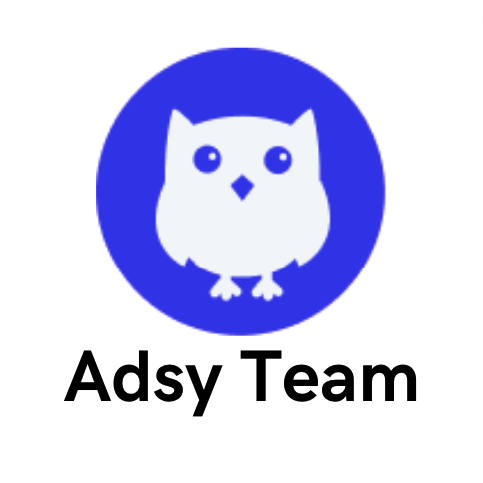Ethical vs. Unethical SEO: What You Need to Know

SEO is important. The years have come and gone, but this statement still remains true. Ideally, it levels the field and gives almost anyone a chance to build a powerful brand presence online.
But here's the thing – high rankings and their benefits don't come on a platter of gold.
They require effort, resources, time, and commitment. But like with most things in life, some people just want to take shortcuts to the top, and that's where unethical SEO comes in.
- What exactly is the difference between ethical and unethical optimization?
- What should you know about them?
- And what kind of SEO best practices will help you meet your business goals?
This is what we’ll explain in detail in this guide.
White vs. black hat: What’s the difference?
Long story short — white hat SEO is the hero of search engine optimization, while black hat is the villain.
White hat
The white hat is also called ethical search engine optimization. It focuses on providing the best experience and value to people. This includes:
- Quality content that answers users' questions.
- Great website that works well and is enjoyable to navigate.
You know, it’s like that all-around good experience.
The marketers who use this method work together with search engines rather than manipulating them. Plus, they know exactly where to invest their resources to get noticed by Google. This ensures that their content gets to the people who need it.
The algorithm, in turn, rewards them with high rankings.
So, there are no sneaky tricks designed to confuse the search crawlers into bumping up a site in search rankings, even though it’s all fluff and no substance.
The best part? You create a good image for yourself in the eyes of your site users (not just search engines). Because, after all, anyone can see that you invest in your web page and you care about people who land on it.
We’ll list legit SEO best practices later on in this article. But for now, here are some white hat tactics to consider:
- Valuable content with personal insights instead of AI-generated, useless posts stuffed with keywords.
- A helpful website created for users instead of hundreds of random pages just for the algorithm.
- Quality article posting instead of cheap PBN links.
Black hat
The black hat SEO practitioners (aka those who use unethical search engine optimization) barely pay any attention to what is acceptable. If they do, it's only to figure out what the loopholes are so they can exploit them.
Source: X
The main goal is to manipulate search algorithms to quickly gain high rankings, drive tons of artificial traffic, and grow their site without much effort. They break every guideline necessary to achieve their objectives.
It might sound fun and exciting if you are living in a Hollywood gangster movie. But in reality, it’s just a matter of time until Google penalizes a website like this, as it’s pretty clear about where they stand.
Source: Google
To sum everything up, let's break down the differences in the table below:
|
White hat SEO |
Black hat SEO |
|
|
Focus |
The focus is on providing real value to the user and making sure that they leave your website with the answers to their questions. |
Couldn't care less about the users and direct all attention to manipulating search engines, usually in ways that also result in a poor user experience. |
|
Method |
Uses search engine-friendly tactics like technical optimization, quality guest posting, useful content, etc. |
Uses manipulative methods that can attract a penalty (e.g., keyword stuffing, cloaking, etc.) |
|
Risk level |
The risk is low since you will be complying with Google’s guidelines. |
The risks are much higher, as your site could be blacklisted by Google. |
|
Viability of results |
Tactics and methods are sustainable. |
Not sustainable, even if you see quick gains at first. |
What is grey hat?
Alright, so now you know about white and black hat. But there is also grey hat.
It might look like we are trying to cover the full spectrum of colors, but stay with us. Grey hat SEO is somewhere between those legit tactics and the black hat approach.
It describes optimization practices that don’t directly go against search engine guidelines. Still, at the same time, they don't exactly follow the instructions as expected. Instead, they try to find loopholes and push the boundaries as much as possible without going completely black hat.
Same as with black hat SEO, the focus is to rank well and quickly in the search engine result pages. Careful, though, even though grey hat tactics can go undetected for a long time, they also carry risks, as they can also be manipulative in nature.
What are some real-life examples of grey hat tactics?
- Buying old domains to take advantage of the existing domain authority.
- Using link exchanges too much. Even if you are careful and don't get caught immediately, there is still a risk.
- Creating doorway pages (spammy pages designed for search engines to lead users somewhere else).
The main issue with grey hat SEO is that today, these tactics may simply be questionable, as there are no rules against them. But before you know it, those same techniques could be banned with any new Google update.
And those sites that used them? They’ll all get penalized.
Examples of bad SEO practices to avoid
There are many different ways to join the bandwagon of those who use the black hat methods. As you well know, it’s just not worth it.
It’s much better to put all those resources and energy into something that lasts and avoid sketchy tricks like:
1. Using keyword stuffing
Keyword stuffing is one of the OGs of spammy SEO tactics. It involves adding as many keywords as possible into a sentence or paragraph.
Apart from being a complete no-go for Google, it will definitely hurt your brand image. Just imagine — by the time the visitor is done reading your page, they will be sick and tired of those repetitive phrases.
An exaggerated example of this would be something like this:
You don't need to guess what the keyword is because it appears at least once in every single sentence.
Sometimes, it's not that obvious, though. It could be using several different keywords in one paragraph or just having hundreds of those search queries in one blog post, even though they don't all naturally fit in.
The thing is – keyword stuffing used to be a legit, honest way to rank your page. But it was… decades ago. Decades.
The search engines saw those phrases and knew to make the page with the most occurrences of those keywords rank higher. After all, the more you used them, the more you had to say about the topic, right?
Of course, that wasn’t true. So, the algorithm caught on to the trick soon enough.
Now, keyword stuffing is just you signaling Google to take your page down. Well, in reality, you won’t get your site unindexed for this one. But you won’t rank well either. Most likely, you’ll end up buried somewhere on the 10th page of search results. And we all know what that means…

Source: LinkedIn
2. Engaging in cloaking
If you thought keyword stuffing was bad, wait until you hear of cloaking. Like the name implies, it describes the bad SEO practice of showing search engines one content and then having a different one for your web visitors.
Why is it a bad thing?
Well, your website should always display the same content for both the users and search bots. Otherwise, it’s clearly a manipulation.
There are different types of cloaking out there. Sometimes, sketchy marketers set it so that different content is displayed based on the user's IP address.
Some just add a user agent in the HTTP to change the content based on whether it's a person or a search bot that's viewing the page. Sneaky, right? No wonder it's considered one of the most fishy black hat tricks.
Another way cloaking works is when people write their keywords more times than their competitors, but in a way that isn’t detectable to human visitors.
This means they could have a generic blog post, but somewhere close to the footer, they would repeat their keywords in white color so it’s not visible on the white background.
Sometimes, they’d also do that with links, too. These hidden texts and links would be there in the source code so crawlers could see them, but not the users. Still, it isn’t the only way to cloak. In the graphic below, you can see the most widespread types:
As you can imagine, Google quickly penalizes the offending sites and removes them from its index when caught (or at the very least crushes their rankings). So, the risk is really high here.
3. Setting up deceptive redirects
Using redirects is a normal, easy way to send users from one page to the other. Typically, you set them up when you have an outdated or broken page, which is absolutely legit.
Source: Moz
But as you've guessed by now, some can also use this technique to hijack traffic and move it to some content that has no connection to what a person was searching for. While it might sound smart on the surface, it's a pretty non-sustainable way to get traffic.
When you show users content they didn’t request, the only thing you can expect for sure is the high bounce rate, which is no good for SEO.
And of course, Google won’t appreciate this either because it clearly goes against its policies.
4. Getting expired domains with backlinks
We all buy domains, and there is nothing wrong with that. Even if your website address has been used before, working with it isn’t a black hat tactic.
But if you buy that domain for any of the following reasons, it’s definitely unethical, and Google won’t like it:
- Getting any irrelevant page and redirecting it to your web address just for the link juice.
- Purchasing several expired domains to create a link network to manipulate rankings.
- Creating a PBN to improve authority.
Sometimes, you’ll also see black hat specialists hunting for expired government or state-owned domains to use their authority.
If you know anything about SEO, you understand that .gov and .edu domains are huge. Usually, these types of sites can drive a ton of traffic, as Google prioritizes them because they tend to be more credible.
For a while, this scheme might go undetected, but eventually, it will attract the attention of Google. And you’ve guessed it, the end is not nearly as fun.
So, long story short, if you buy an expired domain for your normal use, go for it. But if you want to trick search engines, well, you get the idea…
5. Buying niche-specific AdSense-approved account
The whole idea of this tactic is to buy a website or an account that is approved to show Google ads. Often, those who use this unethical strategy maximize the number of ads that could be displayed per page and pick niches that are popular and easy to monetize.
There is nothing wrong with using AdSense. You’ve definitely seen this type of banners on some web pages. They look similar to the one below with the Info icon in the upper right corner:
But the problem starts when people buy those AdSense-approved accounts and fill their sites with tons of low-quality content to keep monetizing it.
It might sound like another clever way to earn money by profiting from traffic that comes to their new blog. But it’s only a matter of time before they’re caught and penalized.
Why is it black hat?
- First of all, Google doesn’t allow you to transfer AdSense accounts or websites.
Source: Google
- This tactic is mostly associated with spammy content (often AI-generated) that violates the E-E-A-T policy.
- New owners in this scheme are basically interested in monetizing their site as much as possible, not offering value.
Using this approach can get you banned from AdSense permanently. Besides, Google can blacklist your domain (or even IP address) and remove your site from search results entirely.
6. Getting cheap, spammy links
It's almost impossible to talk about examples of black hat SEO practices without mentioning spammy backlinks.
Link building is crucial if you want to rank well in search results, but it’s all about how you do it.
Of course, in the ideal world, you want to gain backlinks organically. But, in reality, if you know anything about SEO these days, you understand that pretty much every site has a fee. Whether you are looking for guest posting or niche edits, most likely, you’ll have to pay for that backlink.
Yes, it isn’t entirely white hat. But if you find a niche-relevant site, create truly valuable content, and get asked for the editorial fee, it is considered grey(-ish) hat nowadays.
It’s also quite understandable because no website editor wants to spend time reading and publishing your guest post for free. And whether people like to admit it or not, pretty much everyone buys backlinks or has bought them at some point.
Still, paid links are also different.
Link building gets really black hat when you:
- Publish low-quality, AI-generated guest posts.
- Use PBNs and irrelevant sites for your link building.
- Go for automation to create tons of spammy backlinks.
All these strategies won’t work in the long term because sooner or later, Google will penalize these sites.
So, to avoid penalties when doing link building, try to:
- Pick quality websites with low spam scores, more inbound than outbound links, high traffic that increases over time, etc.
- Create truly useful, human content for your niche edits and guest posts.
- Craft content that has more potential to get organic links (research, visuals, stats, etc.).
7. Spamming comment sections
We’ve already touched on spamming. But we had to emphasize this one.
A long time ago, leaving hundreds and thousands of comments with your links on blogs or forums was a legitimate way to improve your domain authority. You know – the more, the better.
But these days, quality definitely reins over quantity in SEO, so spamming forums and comment sections with your links is a wrong, black hat approach.
No surprise there. Since many people turned to this and started to leave irrelevant comments just for links, site owners got annoyed. But they were not the only ones – users got pissed off as well.
Most were looking to read useful comments and contributions and not have to scroll through a wall of spammy text and links.
That’s why if you use this tactic today, many people will blacklist your site, and some might report it. And, of course, you will also get banned from those forums. In addition, most modern websites have an automatic spam filter that will sift these types of comments out.
This is an example of how a spammy comment was filtered out for review in our blog:
Of course, you can still add forum backlinks to your strategy. But your comments have to be helpful. So, make sure:
- Your comments are relevant and contribute to the discussion.
- You link to content that’s actually helpful (e.g., a valuable guide instead of a salesy landing page).
- You follow the rules forums have for submissions and avoid using spammy, automated schemes.
Source: Real World Tech
So, as you see, there is a variety of unethical SEO practices. And we’ve just mentioned the most widespread ones. There are also multiple other tactics (yes, people are creative).
But what happens if you rely on those black hat ways of doing search engine optimization?
Well, you already know that they can attract penalties (aka manual action). But that's not all. You can also expect consequences like:
- Rankings loss (especially after Google updates).
- Organic traffic drop, which can lead to decrease in conversions and sales if you rely on SEO in your marketing strategy.
- Potential removal from Google index (extreme but more than possible). This means that the website would be invisible to users as it won’t appear in any search engine results. Imagine what this can do to an online business.
In some cases, these sketchy SEO tactics can also attract legal consequences. This is particularly true for practices like content duplication – when they use other people's copy (even if slightly adjusted/rephrased).
Something like this can seriously damage your brand reputation, especially if people start talking about your case. And, of course, all of these consequences ultimately mean that you can lose your customers and waste your money.
Ethical search engine optimization: Best practices
Now that we’ve established that avoiding a black hat SEO company and questionable tactics is the best thing you can do let’s look at some ethical best practices that you can use instead:
1. Carefully craft content that delivers value
Almost all SEO techniques lead back to content. If you can create high-quality copy that matches what your audience needs and meets search engine guidelines, your marketing will be actually effective.
Naturally, to create these quality articles, you have to know what your audience is googling for. That means doing keyword research to find those phrases and understand their search intent.
Based on those keywords, you will then create content in different formats. That means blog posts, reels, demos, case studies, infographics, and more to align with their buyer journeys.
This way, you will ensure that your publications match their needs at every stage of the funnel.
You will, of course, need to go beyond surface answers and do the necessary research to provide deep insights and a fresh perspective on the topics.
So, instead of writing one-off articles on random subjects, it’s better to build a hub of relevant content. This way, you will cover issues that affect your audience from all angles. This is called topical authority and can make you the go-to source for questions in your industry.
For example, Semrush, Ahrefs, and Moz cover SEO-related topics. At the same time, HubSpot, Salesforce, and Pipedrive deal with all things CRM.
So, when people are interested in one of those things, they know where they could find their answers, and, more importantly, whom they could trust. This is a great example of authoritative content strategy.
Source: Pipedrive
2. Build links that Google likes
Google and pretty much any search engine love backlinks. But they are also quite picky, so only quality links would do (at least in the long run).
If you are doing link building, it’s better to focus on quality links rather than going for something shady grady. It might seem like a quick win at first. But the consequences you’ll eventually face will be hard to recover from.
That’s why it is so important to take your time to pick quality referring domains (aka sites that link to you).
These are the things to watch out for:
- High DR. Sure, to keep your backlink profile natural, you need links from sites with different domain authority. But if you’re choosing pages for guest blogging or niche edits, picking the ones that have DR 10 or 20 might be quite useless for most businesses.
- Quality insights. Both the content you offer and the one that’s already published on a site have to be valuable and human-written.
- Niche-relevancy. Google always pays more attention to pages that make logical sense for your industry. So, avoid getting links from random industries.
- No spammy signs. Pages that have high spam scores, tons of ads and pop-ups, and more outbound links than inbound ones are rarely high-quality. More often than not, those are PBNs and link farms. And these are sites you want to stay away from.
- Growing traffic. If a website invests in its content and stays in the white hat territory, it will inevitably get more organic traffic. So, if you see that your potential backlink donor page has decreasing traffic (month-to-month), it’s likely a sign that something is wrong.
Whatever you do, prioritize quality and pay special attention to the pages you pick as your referring domains.
3. Take on-page optimization seriously
When it comes to SEO, the little things count. Even the best content can get ignored if the web page is not properly optimized.
Think about it – most people these days are used to getting what they want right here, right now (especially in terms of content). Now, imagine if your users land on your page and can’t understand the structure or what the copy is about. Most people just won’t bother.
That’s why you need on-page optimization to make your website appealing to both people and search engines.
So, make sure you focus on the following elements:
- Use short paragraphs instead of long ones.
- Write with bullet points and numbered lists to make your copy skimmable.
- Add relevant images, GIFs, or other visual assets to break up the monotony and add some life to the text.
- Include keywords in the header, body, and conclusion – just don’t go overboard with it.
- Optimize your images and meta tags by adding keywords naturally.
- Add alt text for all your images (and make sure your file has a proper name, too).
Source: WordStream
4. Fix the technical side of things
Content, backlinks, and meta tags are worth nothing if your technical SEO is out of order. So, while it’s quite boring, it is essential.
We won’t get into too much detail on the topic in this guide. Yet, let’s recap the most important things you can start with if you aren’t sure what technical optimization is all about:
1. Check whether your site speed is doing fine. Use the free Google tool called PageSpeed Insights to test your web page’s performance. If you see that it is no good, fix the suggested issues.
Source: PageSpeed Insights
2. Fix errors (at least the major ones). You can also do this for free. Start with Google Search Console to find indexing, crawling, etc. issues. Then, run a free site audit with Semrush or Ahrefs – you don’t need to pay if you can confirm that you’re the site owner.
Source: Ahrefs
3. Make sure your website is secure and mobile-friendly. Your CMS will often take care of these two by default. Still, double-check that you have the SSL certificate and that your content displays fine on phones.
Source: Cloudflare
4. Keep your website structure organized. Crawlers are algorithms. That’s why they love a clear, understandable structure. So, if you want to rank well, having a site architecture with organized URLs like www.yoursite.com/services/
Source: Semrush
There are many more things you could do to improve your SEO, but the aspects above are a great start.
The truth is – dozens of things could go wrong at any time. So, you need to know what technical issues and challenges to watch out for. You can check the most common mistakes here to know where to look.
5. Check your site regularly
Just like you would do with your beloved car, you also want to make sure that you are checking your website’s SEO performance to ensure that everything is running as it should.
For this, just run weekly or monthly audits (depending on your goals) to check the following:
- The content that performs best (in terms of rankings, engagement, backlinks, conversions, and any other goals you have).
- The publications that show the worst results and why.
- New and lost backlinks and how you managed to get/lose them.
- Errors (the technical audit we mentioned above).
- New keywords and their positions.
Of course, there are more metrics you could track, but it will all depend on your goals and SEO proficiency:
Source: Semrush
Note: If you want to go further, monitor your competitors as well. When you see where they stand, you can improve your own strategies much easier.
And, of course, don’t track anything just for the sake of it. Take your time to analyze your data and progress at least quarterly to see what you have to change. With this approach, you will definitely get results without any black hat practices.
Conclusion
There's a big difference between ethical and unethical SEO. Both have their appeal, but ultimately, you will stand a better chance of building something that lasts when you go with white hat search engine optimization.
As long as you focus on user experience, create helpful content, use high-quality links, and monitor your website's performance, you'll be already one step ahead of most people in your niche.







